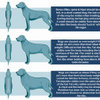question to those who know purebred dogs
luvdogs
14 years ago
Related Stories

MOVINGWhat Those Home-Sale Disclosures Are Really Saying
Avoid costly surprises by knowing what’s included in a home seller’s disclosure, what’s not and what you can do if you suspect foul play
Full Story
DECORATING GUIDES7 Things to Know About Foo Dogs
These Chinese decorative statues have a lengthy history and are powerfully symbolic
Full Story
MOST POPULARHow to Get Rid of Those Pesky Summer Fruit Flies
Learn what fruit flies are, how to prevent them and how to get rid of them in your home
Full Story
FEEL-GOOD HOMEThe Question That Can Make You Love Your Home More
Change your relationship with your house for the better by focusing on the answer to something designers often ask
Full Story
EXTERIORSCurb Appeal Feeling a Little Off? Some Questions to Consider
Color, scale, proportion, trim ... 14 things to think about if your exterior is bugging you
Full Story
CURB APPEAL7 Questions to Help You Pick the Right Front-Yard Fence
Get over the hurdle of choosing a fence design by considering your needs, your home’s architecture and more
Full Story
KITCHEN DESIGN9 Questions to Ask When Planning a Kitchen Pantry
Avoid blunders and get the storage space and layout you need by asking these questions before you begin
Full Story
SELLING YOUR HOUSE15 Questions to Ask When Interviewing a Real Estate Agent
Here’s what you should find out before selecting an agent to sell your home
Full Story
DOORS5 Questions to Ask Before Installing a Barn Door
Find out whether that barn door you love is the right solution for your space
Full Story
GREEN BUILDINGConsidering Concrete Floors? 3 Green-Minded Questions to Ask
Learn what’s in your concrete and about sustainability to make a healthy choice for your home and the earth
Full Story









User
Meghane
Related Professionals
Hockessin Architects & Building Designers · Eau Claire Furniture & Accessories · La Mirada Furniture & Accessories · Clive Furniture & Accessories · Phelan Cabinets & Cabinetry · Bradenton Flooring Contractors · Garland Flooring Contractors · Huntington Station Flooring Contractors · Johnson City Flooring Contractors · Lexington Flooring Contractors · Oregon City Flooring Contractors · Riverbank Flooring Contractors · San Tan Valley Flooring Contractors · Sun City Flooring Contractors · White Bear Lake Flooring ContractorsluvdogsOriginal Author
prairie_love
prairie_love
User
psmum
cindyandmocha
beegood_gw
joepyeweed
prairie_love
housefairy
shboom
cindyandmocha
Meghane
housefairy
pkguy
shroppie